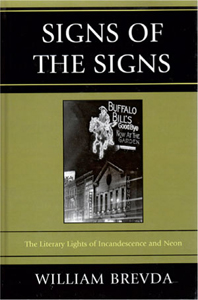Bowlarama: The Architecture of Mid-Century Bowling
 Bowlarama: The Architecture of Mid-Century Bowling
Bowlarama: The Architecture of Mid-Century Bowling
By Chris Nichols with Adriene Biondo
Angel City Press, 2024
Hardcover, 176 pages, $40
Reviewed by Ronald Ladouceur
[See: SCA Zoom Recording by Bowlarama’s co-author, Chris Nichols]
A chatty and charming companion to Thomas Hine’s Populuxe (1986) and Alan Hess’s Googie: Fifties Coffee Shop Architecture (1986). Bowlarama, a handsome, fact-filled book chronicles the entire history of bowling, but focuses the half half-decade between 1957 and 1962, when separate streams of technology, suburbanization, and entertainment culture combined to fuel the development of fantastic and monumental architectural confections throughout the west and across the country.


 Mapping Historical Las Vegas: A Cartographic Journey
Mapping Historical Las Vegas: A Cartographic Journey Signs of the Signs: The Literary Lights of Incandescence and Neon
Signs of the Signs: The Literary Lights of Incandescence and Neon